
Many of us have been overwhelmed – emotionally, spiritually, intellectually – by a work of art, be it a painting, a play, or a belting punk song. It’s one of the great joys of life to be awed by an artist’s ingenuity, energy, humanity. It’s less common for such an experience to lead us to an intensive, years-long quest to understand just why a work of art affected us so profoundly. For Andrew Turley, former soldier and ad man, there was no turning back when he came face-to-face with Sidney Nolan’s painting Gorilla. He had to go digging.
The painting is a haunting, hazy vision of a gorilla floating horizontally before a spiky mountain range. The gorilla is almost human in form, its mouth open, in anguish, or sorrow, or pain, or death. The brushstrokes are fast and urgent, the paint thin, and yet the whole captures something elusive and alarming. It is not an easy work, but when Turley and his partner, Rachael Ash, saw it at an auction preview in Sydney in 2012, they could not walk away.
“We knew nothing about it,” Turley tells me via Zoom from his Adelaide home. “We connected with our hearts to the work.”

Gorilla, 1963, the painting that triggered Andrew Turley’s journey of discovery. Credit: © The Sidney Nolan Trust. All Rights Reserved, DACS / Copyright Agency, 2024
The couple flew to Melbourne for the auction and bought the painting.
“We were absolutely physically jubilant,” Turley says. “But also sick to the pit of our stomachs that we’d spent that kind of money on a piece of art.”
“That kind of money” was close to $40,000. This dramatic, unprecedented response set Turley’s inquiring nature abuzz. What was it about the painting that prompted such an intense reaction? What imagery, philosophies, writings, and events had fed Nolan’s thinking and creation process? Frustrated by a lack of information about the painting and encouraged by Ash to find out more, Turley set off to fill what he describes as an “art-historical void”.
He embarked on an obsessive 12-year voyage of discovery: following the footsteps of Nolan’s African travels with his first wife, Cynthia; reading every book on Nolan he could get his hands on; scouring diary entries, photographs and notes from the recently opened Sidney Nolan archives at the National Library of Australia; trawling the Tate archives in London; and visiting Nolan’s Jacobean manor house on the English border with Wales.
The result is a 352-page book, Nolan’s Africa, published on November 19 by Melbourne University Press under its Miegunyah Press imprint. Turley’s pitch to the publishers summarised the book as “part detective story, part adventure, part history” and “all art”.
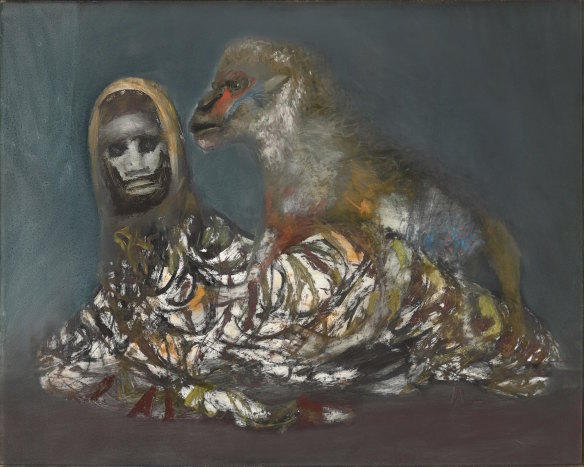
Man and Monkey, (6/2/63).Credit: © The Sidney Nolan Trust. All Rights Reserved, DACS / Copyright Agency, 2024.
He has fulfilled that promise and more, meticulously documenting the itinerary (with maps) of the Nolans’ three-month journey through Africa in 1962 and tracking down 98 of Nolan’s Africa paintings, all illustrated and listed in the book, along with extensive exhibition histories, including appearances on film and television, and buying another three of the paintings along the way – Figure at Harar, Man and Monkey, and African Head, all from 1963.
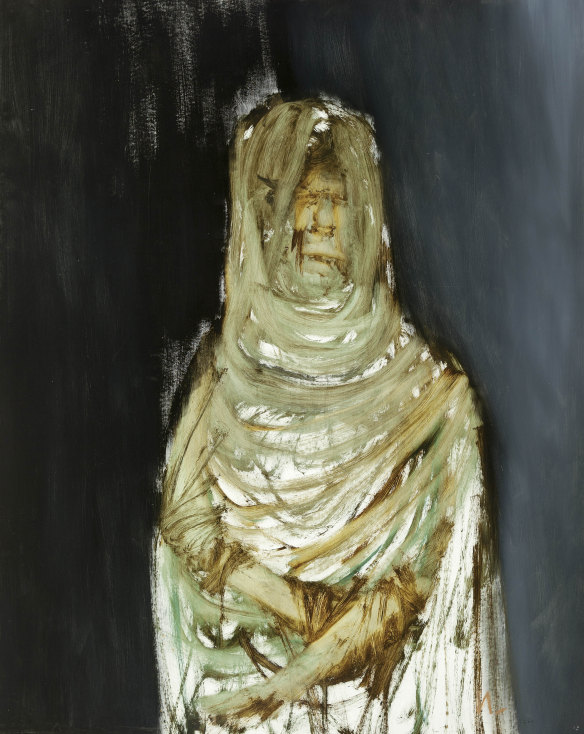
Figure at Harar, (3/2/63).Credit: © The Sidney Nolan Trust. All Rights Reserved, DACS / Copyright Agency, 2024.
The paintings, Turley tells me, have “everything and nothing to do with Africa”, and his book amplifies this idea, taking as its focus the five years – from 1957 to 1962 – that preceded the series. Turley threads together Nolan’s influences, preoccupations and movements in those years: the books he read, such as Alan Moorhead’s No Room in the Ark (which inspired the Nolans’ journey), the people he is associated with, such as Sir Julian Huxley, founder of the World Wildlife Fund, and the places that left an indelible mark.
“In January 1962, Nolan visited Auschwitz and it shook him to the core,” Turley writes. “The experience was one of the most dramatic but least-known events that shaped the African series.”
Before his visit to Auschwitz, Nolan read Romain Gary’s The Roots of Heaven. The novel’s lead character, Morel, survives the Nazi concentration camps by thinking of elephants – symbols of freedom. After the war, Morel travels to Africa to stop the slaughter of wildlife.
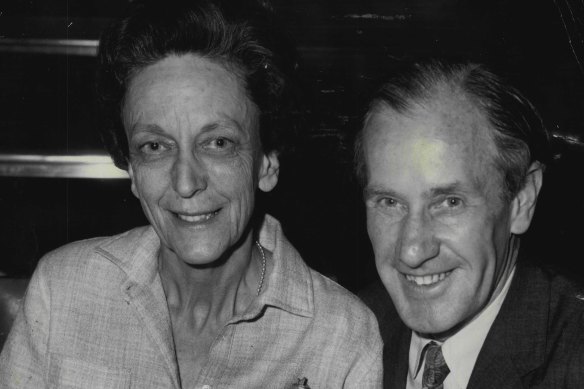
Sidney and Cynthia Nolan travelled to Africa in 1963, a journey that is retraced in Andrew Turley’s book.Credit: Fairfax Media
“Six weeks after Nolan got back from Auschwitz, the first painting he did was an elephant,” Turley says. “This was six months before [his and Cynthia’s travels to Africa].”
Turley’s search began with his discovery that Gorilla was first shown at London’s prestigious Marlborough Fine Art gallery in 1963, one of 35 paintings unveiled in the exhibition Sidney Nolan: African Journey. On display were paintings of apes, monkeys, elephants, human heads and tortured figures, animals of the Serengeti (gazelles, antelopes, lions, zebras, cheetahs, giraffes, leopards, hyenas), a desert landscape, and two portraits of French poet Arthur Rimbaud, who lived in the Ethiopian city of Harar in the late 19th century and whose writings influenced Nolan throughout his career.
The exhibition’s opening night was a teeming success, attended by the rich, famous and powerful. Turley shares with me an article in The Bulletin magazine from 1963, which observes that “between the kisses and the wine, Princess Margaret and her husband [Lord Snowdon] tried to squeeze in for a look … That’s how fashionable Sidney Nolan is.”
Queen Elizabeth II asked for a private viewing, and bought one of the paintings, Herd at Waterhole, for Prince Philip, who was then president of the World Wildlife Fund. The painting hung over the prince’s desk at Buckingham Palace for almost 60 years.
“King Charles very graciously allowed the release of that painting to be included in the book,” Turley tells me. “As far as I’m aware, it hasn’t been published for 50 years, and I believe that this is the only colour reproduction of it in the public domain.”
Despite the glamorous, frenzied exhibition opening, Nolan’s Africa series has fallen from the limelight. Turley argues that this is partly of Nolan’s making. He writes: “When Sidney declined to speak publicly about the series, he created an art-historical void. The vacuum filled with the loudest, most contentious opinion, repeated the most often, and the status quo has endured now for more than six decades.”
Some critics were impressed and intuited the broader themes of the paintings – the commentary on nature, humanity and civilisation – but others were puzzled by the works. One critic described them as having a “curious feeling of haste and superficiality”, comparing them to “colour snaps, taken out of the car window on a drive through a game reserve”.
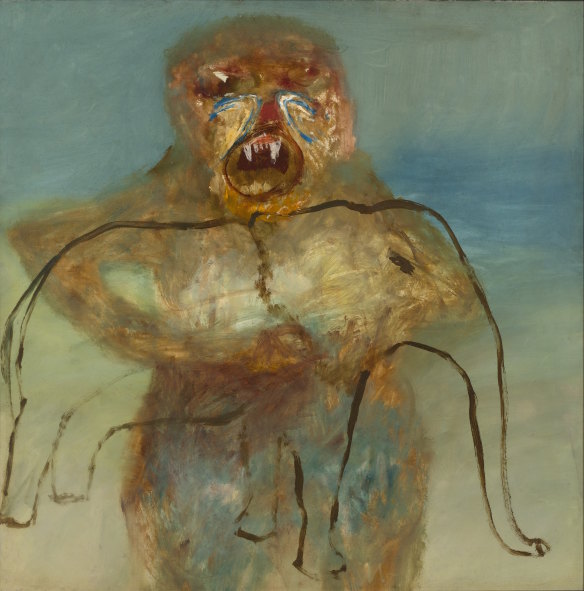
Ape and Elephant, 1963. Credit: © The Sidney Nolan Trust. All Rights Reserved, DACS / Copyright Agency, 2024. Image courtesy Museum of Old and New Art (MONA).
Turley has made it his mission to reassert the series’ importance, to show that the paintings are far more than superficial travel snaps, and that they are more relevant than ever, layered with references to colonialism, industrialisation, the threat of nuclear conflict, the destruction of wildlife, and human cruelty – towards each other and the very planet on which we depend.
What’s remarkable about Turley’s undertaking is that before his encounter with Gorilla, he knew very little about Australian art. He ran a communications and advertising agency in Sydney, and would regularly travel to Africa to “decompress”, eschewing guided tours, charting his own journey, sleeping on roofs, catching local buses, keeping it local.
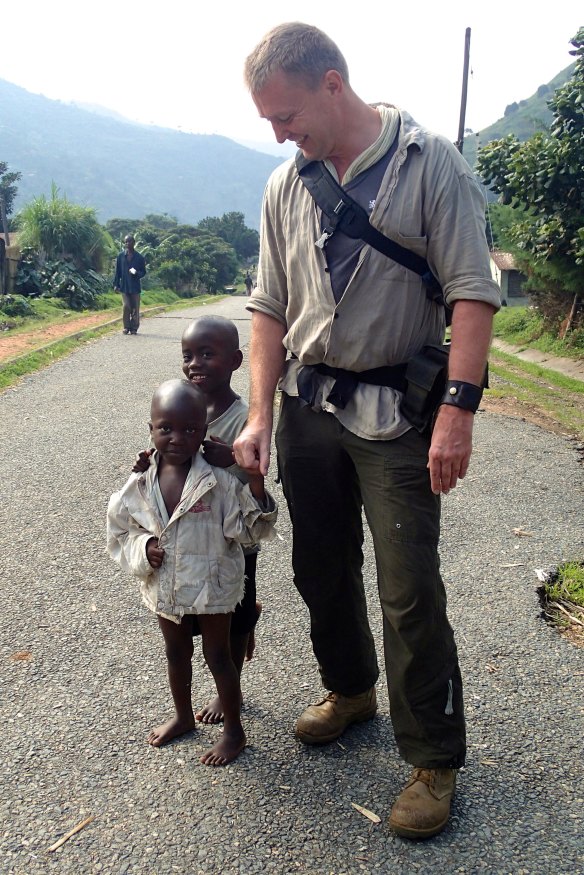
Andrew Turley with local children in the Rwenzori Mountains of Uganda.Credit: Courtesy of Andrew Turley
Before that, he had been a soldier and UN peacekeeper, deployed in the killing fields of Cambodia, clearing mines and recording mass graves from years of genocide under the Khmer Rouge. His book reveals an exacting, military discipline, and the sensibility of someone who has witnessed first-hand the horrors of which humans are capable.
While Turley followed in the footsteps of the Nolans’ African journey, he could not face visiting Auschwitz. He suspects his experiences in Cambodia may have something to do with his reluctance.
“I actually found being so connected to Sidney’s Auschwitz experience quite disturbing,” he says. “There were times when I had to put the pen down and stop writing that section of the story, leaving it for a day before I could mentally regroup. Rachael suggested we travel there in 2019 but I didn’t feel ready. We have talked about it more recently and although it would still be uncomfortable, agreed we do have a duty to go and play our part in ensuring it is remembered.”
I’m interested in an art historian’s perspective on Turley’s book and ask Jane Clark – who curated a retrospective of Nolan’s works at the National Gallery of Victoria in 1987 – for her response. Clark is currently senior research curator at Hobart’s Museum of Old and New Art, which holds some major Nolans in its collection, including the vast 1620-panel work Snake, and some African paintings. I ask Clark whether Nolan’s African series has been overlooked.
“To a certain extent, yes,” she says. “And I assume some of that’s because we didn’t have access to his diaries and so on. The works were sometimes dismissed as, you know, the globetrotting artist who went travelling and then painted what he saw to make money. But I think in the current period, when Nolan’s had a few major retrospectives, here and in England, the African paintings have always been included.
“But I don’t think anybody had connected them in the way Andrew has to the Cold War themes, the Second World War, Auschwitz … It’s definitely not just an art book, because it takes Nolan’s art as a springboard to look at ... 20th century events.
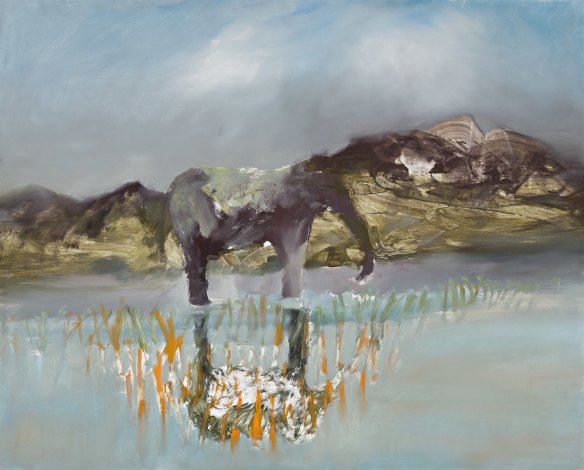
Elephant in Landscape, (6/3/62).Credit: © The Sidney Nolan Trust. All Rights Reserved, DACS / Copyright Agency, 2024. Image courtesy Deutscher and Hackett.
“Andrew was a great person to write this book, because he has a real military knowledge of politics, the history of the 20th century, which I think lots of us don’t. Although he’s not an art historian, he has looked at, read, and digested material on Nolan, very, very deeply over many years … it’s a very personal book, you get a real sense of Andrew saying, ‘this is what I think, this is what I’ve discovered’, that’s why I think it’s very readable. But he also backs it up with what he’s found in the diaries, what he’s found elsewhere.”
After our Zoom call, I email Turley to ask whether he would rate Nolan’s African series as important as the Ned Kelly works, or perhaps even more so.
He responds: “Now that is a hell of a question … and I suppose, depends on how ‘importance’ is defined. To his establishment? To his career? To [establishing] Australian identity in Europe? . Let me try it from a different angle. I believe Nolan thought the African series was more important.”
While the Kelly series anchored Nolan “to a distinctly Australian character and context”, the African series expressed a “world consciousness and world conscience,” Turley says.
In short, the answer is yes. The gorilla’s cri de coeur has become only louder with time.
Nolan’s Africa will be published by The Miegunyah Press on November 19, $120.
The Booklist is a weekly newsletter for book lovers from Jason Steger. Get it delivered every Friday.









 Add Category
Add Category